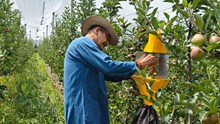
In a significant move to address rising pulse prices, Indian government has extended the duty-free import policy on yellow peas until March 31, 2026. This decision, announced in a government order issued on May 30, 2025, is effective immediately.
As the world's largest importer of yellow peas, India heavily relies on supplies from Canada and Russia. The duty-free import policy was first introduced in December 2023 and has been extended several times since then, with the most recent extension granted in March 2025, which was set to expire on May 31, 2025.
With this latest extension, the government continues its efforts to manage domestic supply and control food inflation. Yellow peas have become a major component of India’s pulse imports, accounting for 2.9 million tonnes, or 45%, of the country's total pulse imports in 2024. Notably, India did not import any yellow peas in 2023.
India’s overall pulse imports surged to an estimated 6.63 million tonnes in 2024, nearly double the 3.31 million tonnes imported in 2023. This figure has surpassed the previous record of 6.27 million tonnes set in 2017.
The extension of duty-free imports aligns with expectations of improved domestic pulse production. According to the Department of Agriculture and Farmers Welfare, the production of key pulses such as tur, chana, masur, and moong is expected to be higher this year, thanks to favourable monsoon conditions.
Tur production is estimated at 35.02 lakh metric tonnes (LMT), a 2.5% increase over last year's 34.17 LMT. Kharif moong output is projected to reach 13.83 LMT, which is 20% higher than the previous year's 11.54 LMT. Good sowing patterns and ample soil moisture are also expected to enhance chana and masur production.
With improving domestic production and continued import support, the government aims to maintain price stability in the pulse market and ensure food security for millions of people.
















